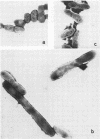Abstract
The amino acid consumption by Bordetella pertussis growing in broth containing casein hydrolysate was examined. Serine, proline, alanine, glycine, aspartate, and glutamate were rapidly consumed, in a manner which suggested that they supplied the energy requirements of the organism; exhaustion of the energy source appeared to be the main factor limiting the yield of cells. There was no correlation between the utilization of individual amino acids and the phase of growth; uptake appeared to depend only upon relative concentrations. Consumption of threonine, phenylalanine, histidine, leucine, and methionine was slight; consumption of valine and lysine was variable, and isoleucine was excreted. The addition of monosodium l-glutamate (3 mg/ml) to the broth in shaken flasks increased the cell yield by an average of 43.5%. It had no detectable adverse effect upon the agglutin-producing capacity, agglutinability in antisera versus smooth and rough growth phases, mouse-lethal toxicity, histamine-sensitizing factor potency, or intracerebral protective potency of the culture. Broth supplemented with monosodium l-glutamate has been used over a 2-year period to prepare experimental vaccines by both batch and continuous cultivation methods at controlled pH; the cell yields obtained from the supplemented broth have been up to 52% higher than those from the basal broth. The use of glutamate to replace a proportion of casein hydrolysate in the broth caused a reduction in the cell yield, an alteration in cell morphology, and reduction in the mouse-lethal toxicity, the histamine-sensitizing factor potency, and the intracerebral protective potency of the cells.
Full text
PDF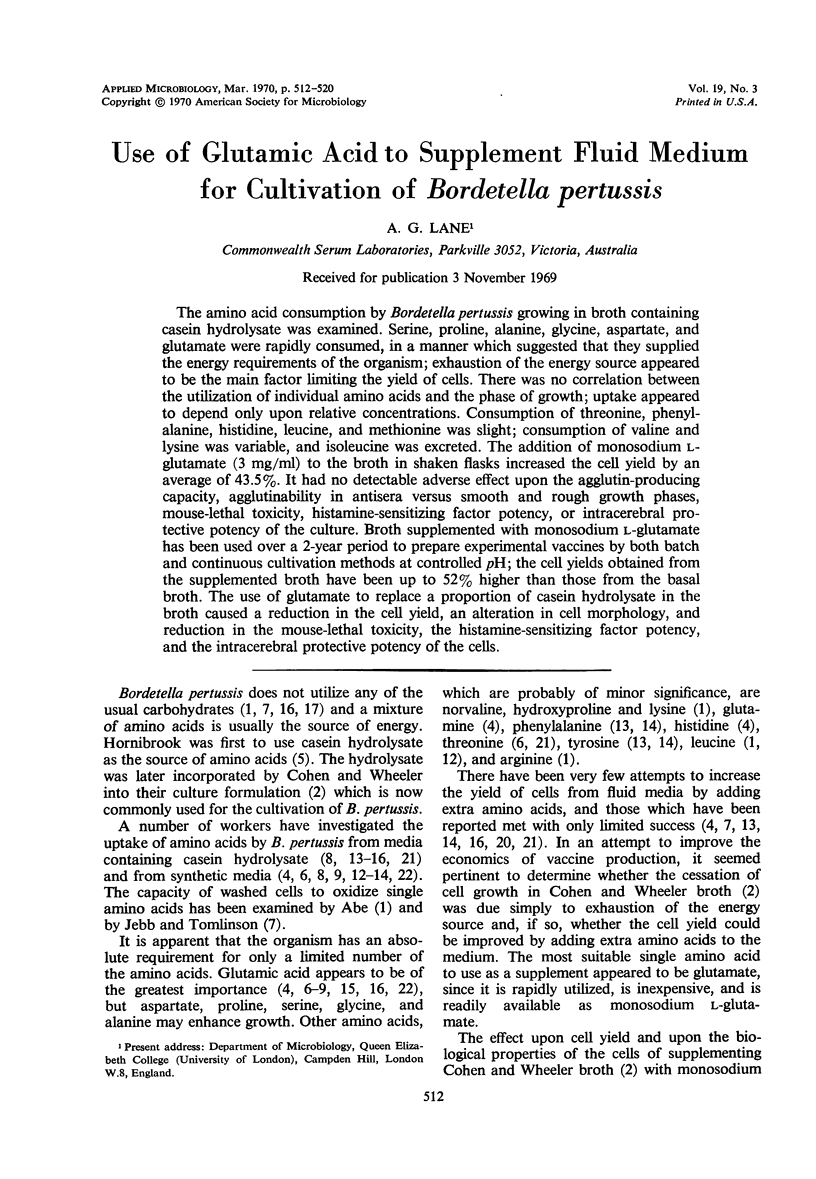
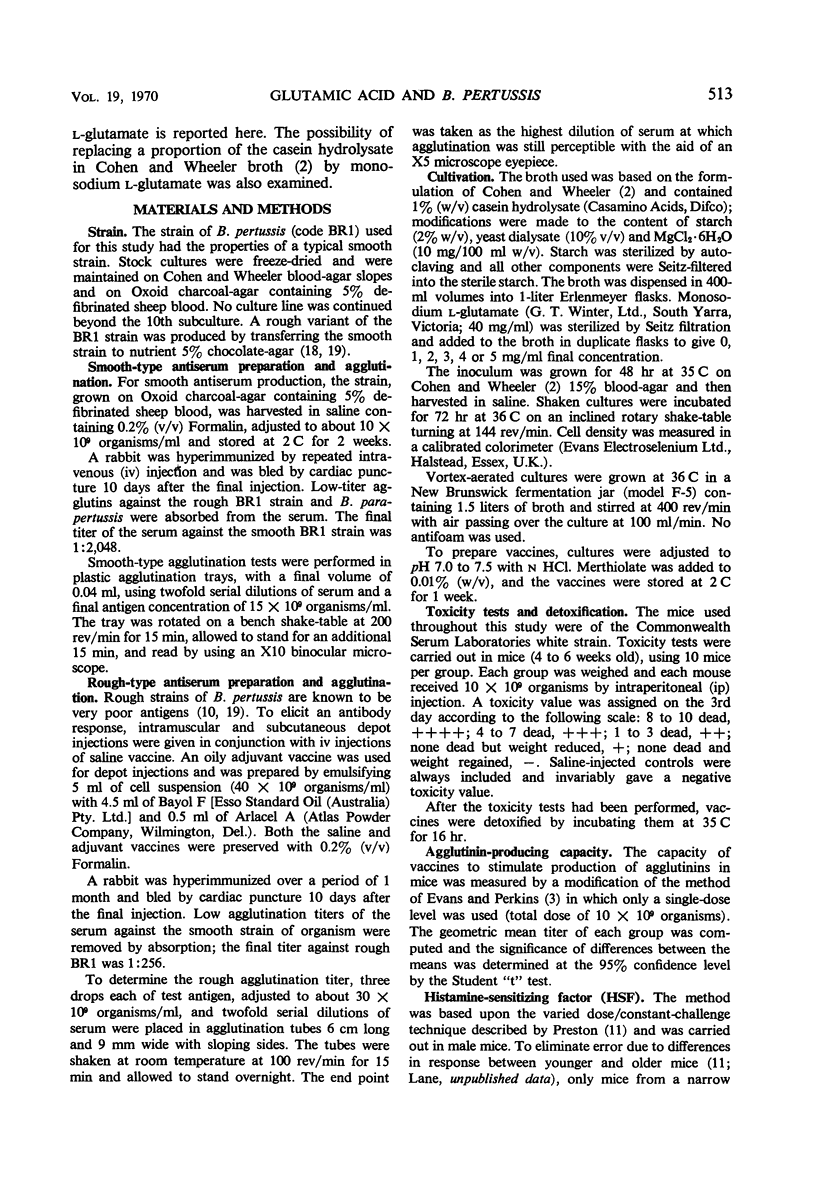
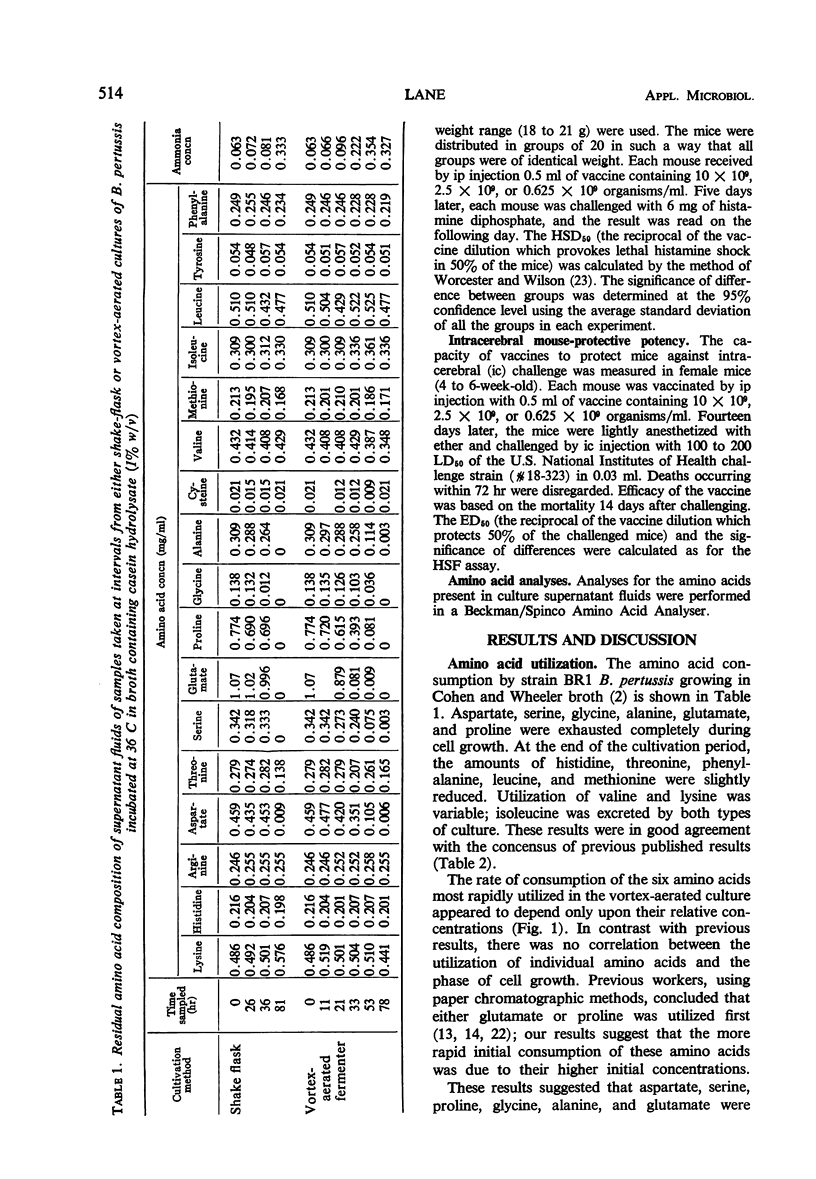
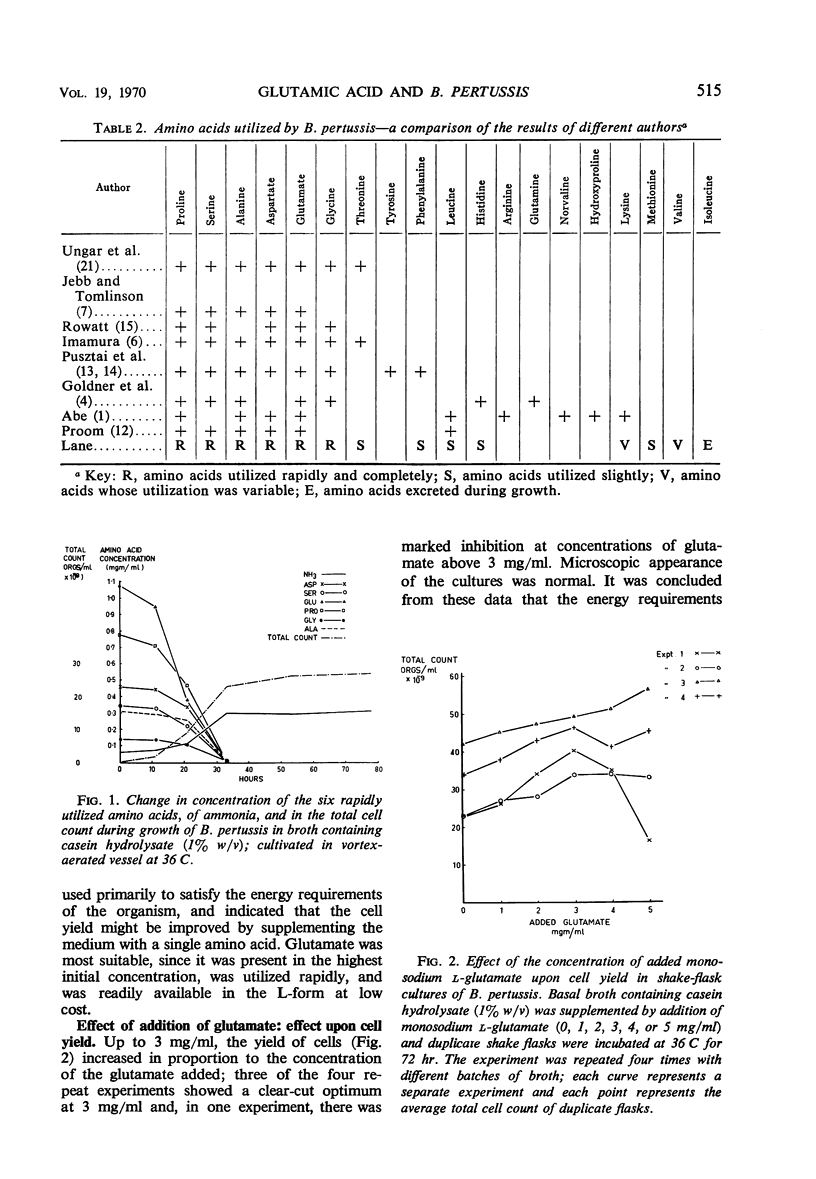
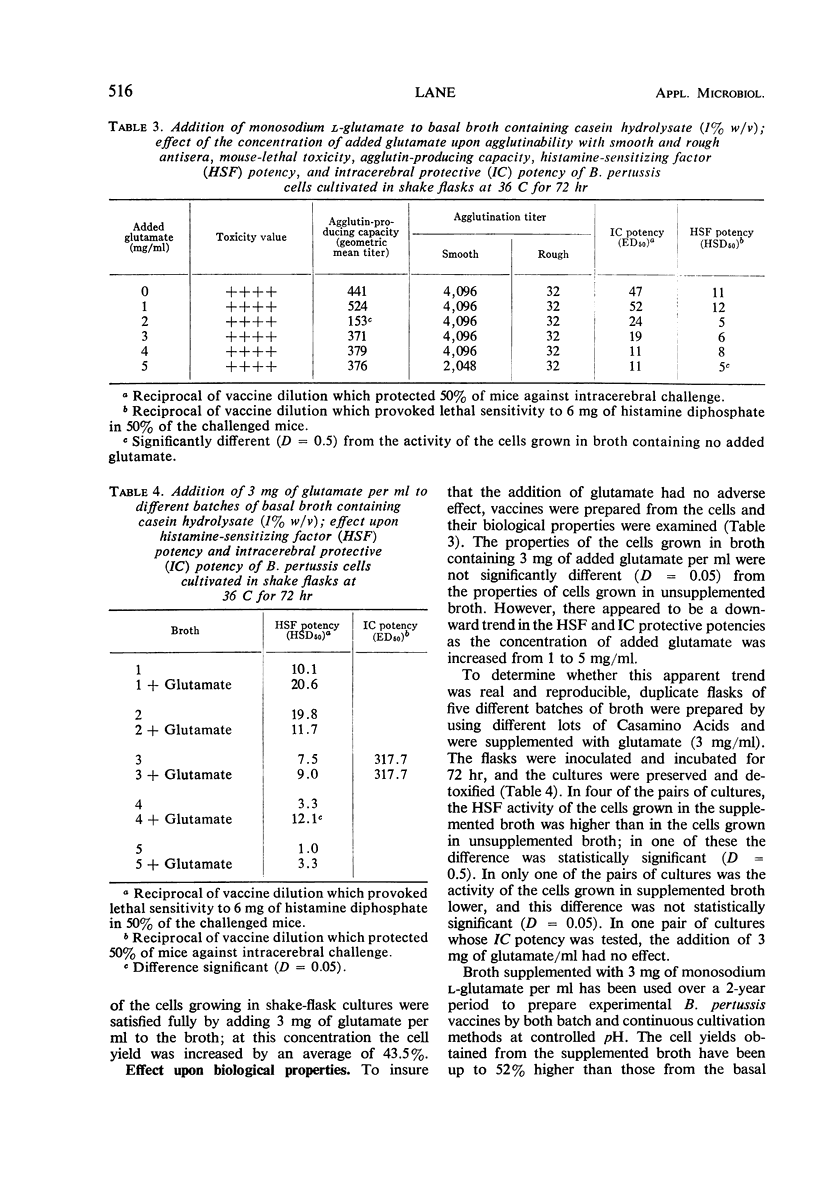
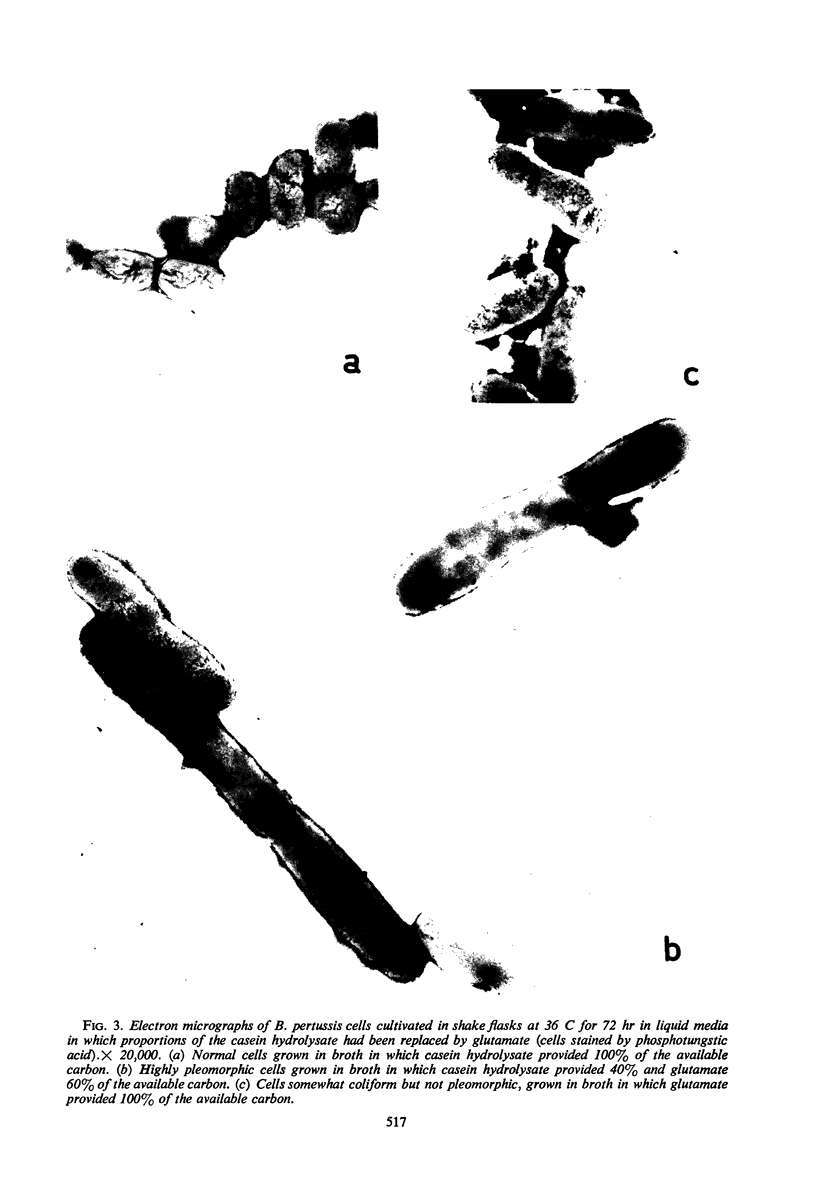
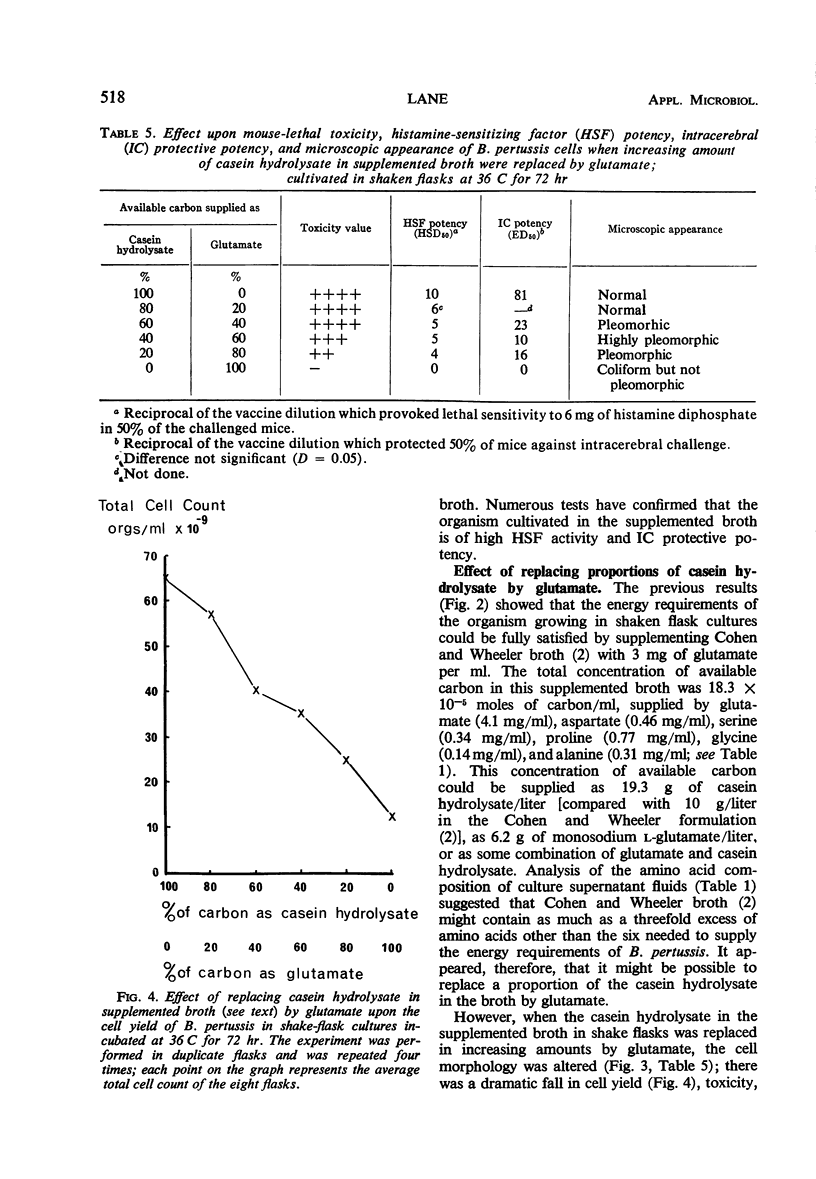
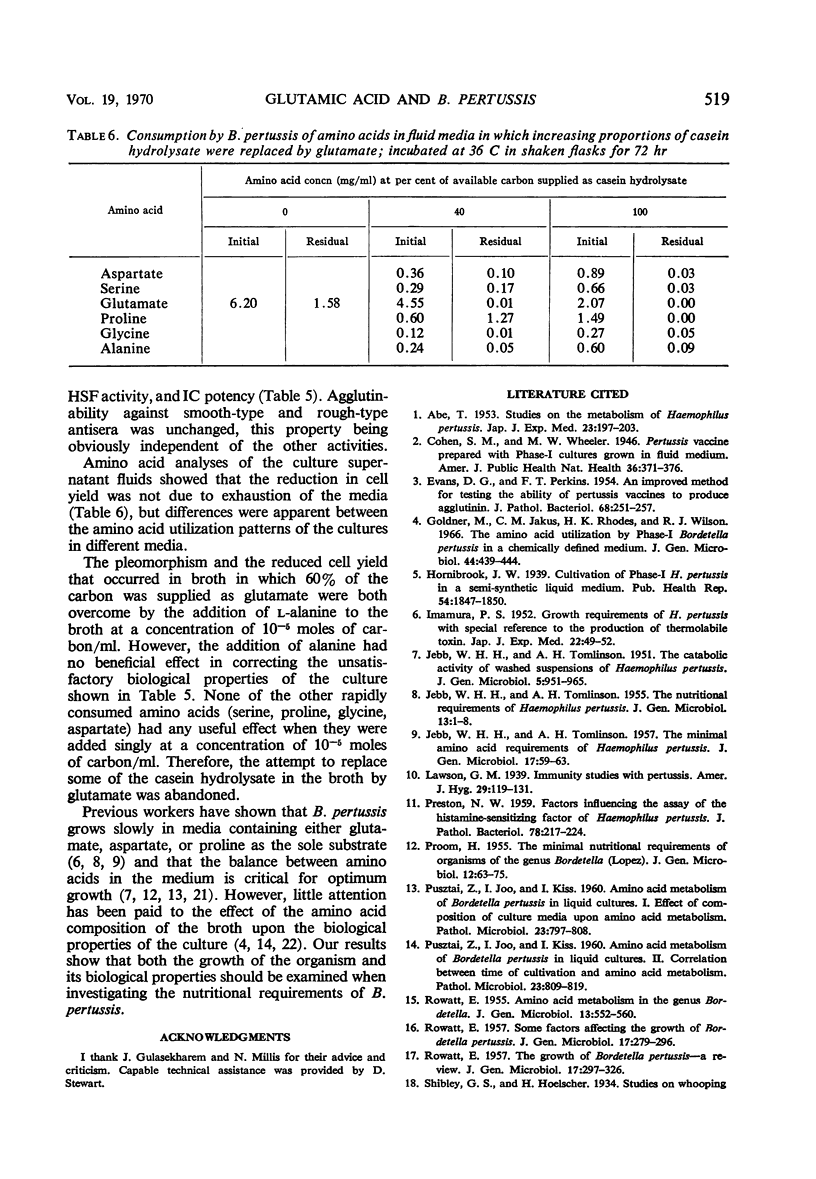
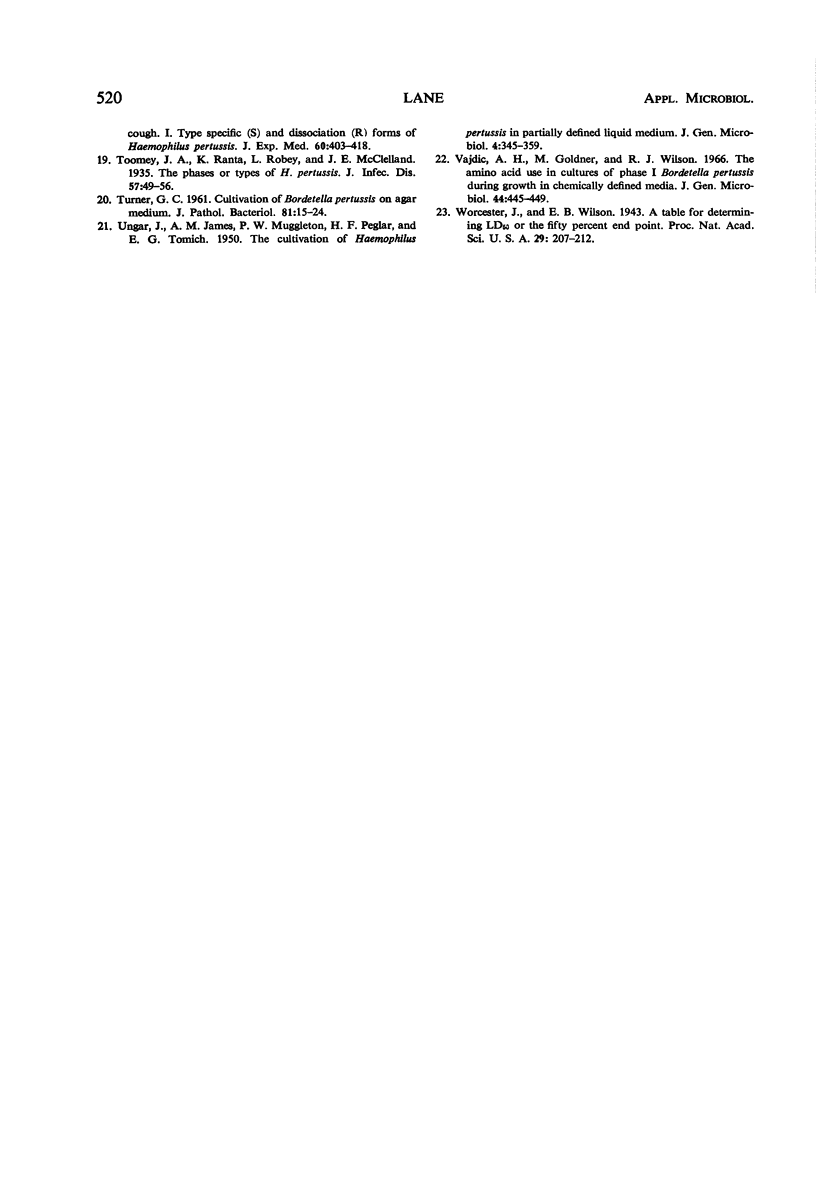
Images in this article
Selected References
These references are in PubMed. This may not be the complete list of references from this article.
- ABE T. Studies on the metabolism of Hemophilus pertussis. I. On the metabolic cycle. Jpn J Exp Med. 1953 Jun;23(3):197–203. [PubMed] [Google Scholar]
- Cohen S. M., Wheeler M. W. Pertussis Vaccine Prepared with Phase-I Cultures Grown in Fluid Medium. Am J Public Health Nations Health. 1946 Apr;36(4):371–376. [PMC free article] [PubMed] [Google Scholar]
- EVANS D. G., PERKINS F. T. An improved method for testing the ability of pertussis vaccines to produce agglutinin. J Pathol Bacteriol. 1954 Jul;68(1):251–257. doi: 10.1002/path.1700680131. [DOI] [PubMed] [Google Scholar]
- Goldner M., Jakus C. M., Rhodes H. K., Wilson R. J. The amino acid utilization by phase 1 Bordetella pertussis in a chemically defined medium. J Gen Microbiol. 1966 Sep;44(3):439–444. doi: 10.1099/00221287-44-3-439. [DOI] [PubMed] [Google Scholar]
- JEBB W. H. H., TOMLINSON A. H. The catabolic activity of washed suspensions of haemophilus pertussis. J Gen Microbiol. 1951 Nov;5(5 Suppl):951–965. doi: 10.1099/00221287-5-5-951. [DOI] [PubMed] [Google Scholar]
- JEBB W. H., TOMLINSON A. H. The minimal amino acid requirements of Haemophilus pertussis. J Gen Microbiol. 1957 Aug;17(1):59–63. doi: 10.1099/00221287-17-1-59. [DOI] [PubMed] [Google Scholar]
- JEBB W. H., TOMLINSON A. H. The nutritional requirements of Haemophilus pertussis. J Gen Microbiol. 1955 Aug;13(1):1–8. doi: 10.1099/00221287-13-1-1. [DOI] [PubMed] [Google Scholar]
- PRESTON N. W. Factors influencing the assay of the histamine-sensitising factor of Haemophilus pertussis. J Pathol Bacteriol. 1959 Jul;78:217–224. [PubMed] [Google Scholar]
- PROOM H. The minimal nutritional requirements of organisms of the genus Bordetella López. J Gen Microbiol. 1955 Feb;12(1):63–75. doi: 10.1099/00221287-12-1-63. [DOI] [PubMed] [Google Scholar]
- PUSZTAI Z., JOO I., KISS I. Amino-acid metabolism of Bordetella pertussis in liquid cultures. I. Effect of composition of culture media upon amino-acid metabolism. Pathol Microbiol (Basel) 1960;23:797–808. doi: 10.1159/000161042. [DOI] [PubMed] [Google Scholar]
- PUSZTAI Z., JOO I., KISS I. Amino-acid metabolism of Bordetella pertussis in liquid cultures. II. Correlation between time of cultivation and amino-acid metabolism. Pathol Microbiol (Basel) 1960;23:809–819. doi: 10.1159/000161043. [DOI] [PubMed] [Google Scholar]
- Public Health Weekly Reports for OCTOBER 13, 1939. Public Health Rep. 1939 Oct 13;54(41):1847–1875. [PMC free article] [PubMed] [Google Scholar]
- ROWATT E. Amino acid metabolism in the genus Bordetella. J Gen Microbiol. 1955 Dec;13(3):552–560. doi: 10.1099/00221287-13-3-552. [DOI] [PubMed] [Google Scholar]
- ROWATT E. Some factors affecting the growth of Bordetella pertussis. J Gen Microbiol. 1957 Oct;17(2):279–296. doi: 10.1099/00221287-17-2-279. [DOI] [PubMed] [Google Scholar]
- ROWATT E. The growth of Bordetella pertussis: a review. J Gen Microbiol. 1957 Oct;17(2):297–326. doi: 10.1099/00221287-17-2-297. [DOI] [PubMed] [Google Scholar]
- TURNER G. C. Cultivation of Bordetella pertussis on agar media. J Pathol Bacteriol. 1961 Jan;81:15–23. doi: 10.1002/path.1700810103. [DOI] [PubMed] [Google Scholar]
- UNGAR J., JAMES A. M., MUGGLETON P. W., PEGLER H. F., TOMICH E. G. The cultivation of Haemophilus pertussis in partially defined liquid media. J Gen Microbiol. 1950 Sep;4(3):345–359. doi: 10.1099/00221287-4-3-345. [DOI] [PubMed] [Google Scholar]
- Worcester J., Wilson E. B. A Table Determining L.D.50 or the Fifty Per Cent End-Point. Proc Natl Acad Sci U S A. 1943 Jul;29(7):207–212. doi: 10.1073/pnas.29.7.207. [DOI] [PMC free article] [PubMed] [Google Scholar]



